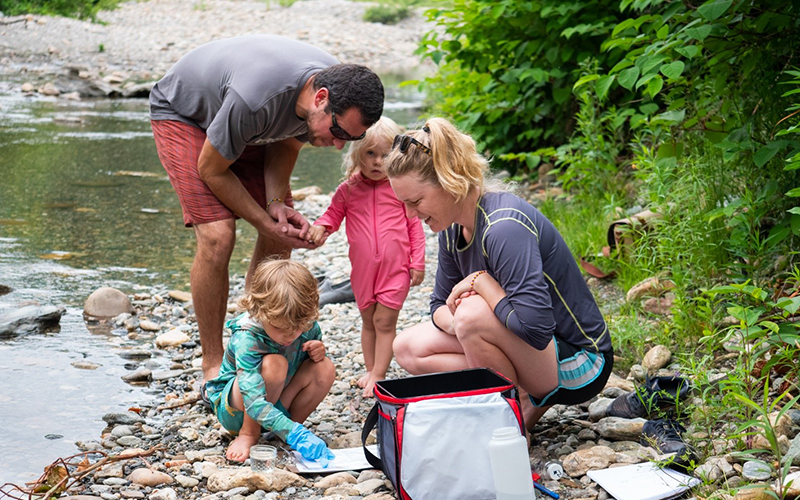On June 12 and 13, 18 teams of Mad River Watch volunteers visited their field sites to collect data and make environmental observations for the first time this year. This article is part of an ongoing series that shares highlights from this field work as well as lessons learned from the past 38 years of Friends of the Mad River’s (FMR) Mad River Watch program.
In 2021, Friends of the Mad River launched the first field season of the newly-imagined Mad River Watch 2.0. “We wanted to find ways for our volunteers to make a broader range of observations than the Mad River Watch program had typically focused on in the past,” said FMR stewardship manager Ira Shadis. “Building up the observational skills of our volunteers sets the stage for the detailed data collection they undertake. Taking in the context of their site, such as which native plants are thriving or what the water level is, provides the necessary framework for understanding what measurements like water temperature and pH really mean.”
This summer, Mad River Watch volunteers are recording data about physical, chemical, and biological characteristics of the Mad River and its tributaries. These include data about the streams themselves, such as flow, water clarity, water temperature, conductivity, and pH. Volunteers are also collecting data about the surrounding landscape and the plants and animals that are found there. These include detailed observations of the riparian buffer (the wooded area along the stream), erosion and sedimentation along the streambanks, the presence of nuisance and invasive species, wildlife and wildlife signs (like tracks and scat). Volunteers also monitor the presence and impact of humans on the site by counting and noting the type of trash they find.
“As volunteers wrap up their site visits, they have two very important tasks that deepen their connection and investment in their field sites and the whole watershed. First, they take a hands-on role as stewards by looking for evidence of human impact and activity and collecting trash that they find on their site. Second, they pull out their field journals and, through note-taking, drawing, poetry, or whatever approach works for them, they reflect on their site and their experience as members of this watershed community,” said Shadis.
Mad River Watch volunteers will return to their field sites five more times over the course of the summer. Highlights and data collected can be explored at www.friendsofthemadriver.org/highlightsfromthefield
FIELD HIGHLIGHTS
The field season began with two classic Vermont summer days with air temperatures in the high 60s and 70s. The relatively dry spring was reflected in the many low and moderate flow levels observed across the Valley. Water temperatures followed the historical pattern and increased as the river approached the confluence with the Winooski. The average temperature was 59.6 degrees F, which is slightly warmer than the preferred temperature for brook, rainbow, and brown trout. These elevated temperatures, though not uncommon in the Mad, are likely connected with the low water levels and the lack of shade that results from thin or missing riparian buffers.
Volunteers noted the extent and character of the riparian buffers at their sites. Almost all sites had buffers less than 10 feet in width on both sides of the stream or river. While these buffers did provide some habitat for wildlife (volunteers spotted chickadees, redstarts, sandpipers, and swallowtail butterflies), small buffers correlate strongly with reduced biodiversity and degraded habitat quality for both riparian and aquatic organisms. In addition, volunteers noted the presence of invasive species, like Japanese knotweed, at more than half the field sites.
This week saw 18 teams of volunteers visit 16 field sites (some sites are visited by different teams on different days). Water temperatures ranged from a low of 54.9°F at Clay Brook in Warren on Sunday to a high of 64.5°F at the USGS gage in Moretown on Monday. Over the summer, FMR will compile data and observations and share key findings and highlights in The Valley Reporter and online at friendsofthemadriver.org/madriverwatch.












